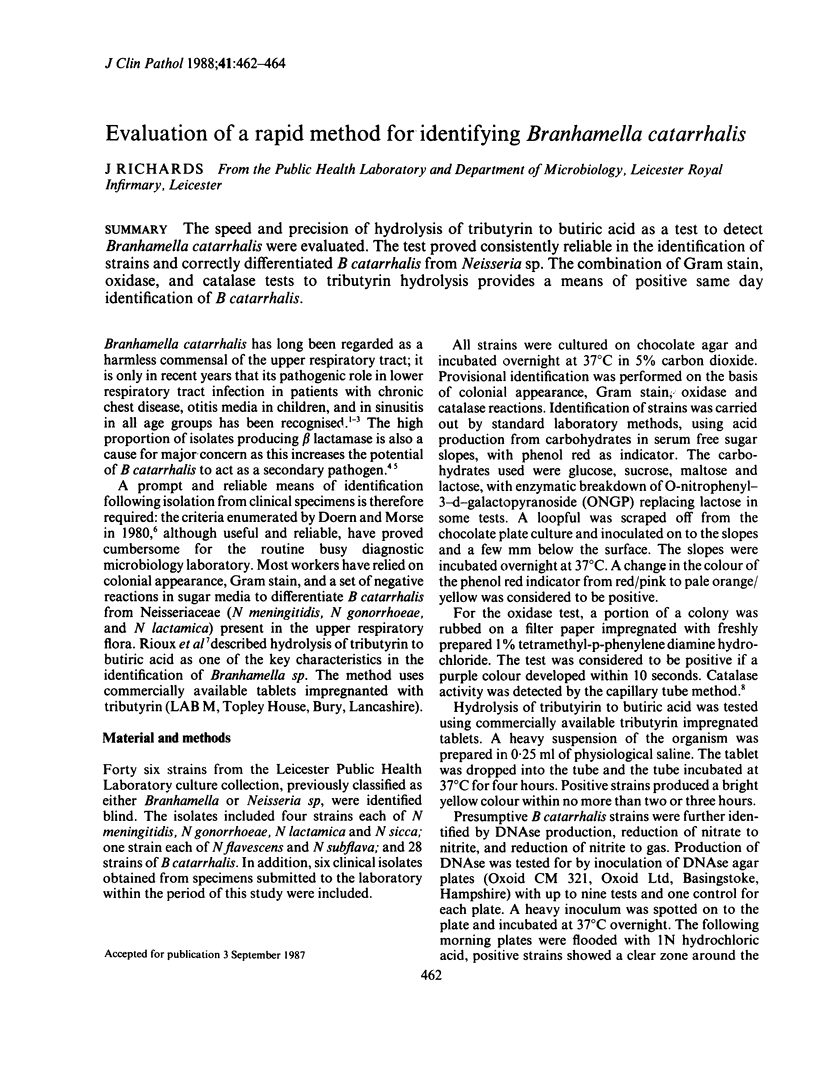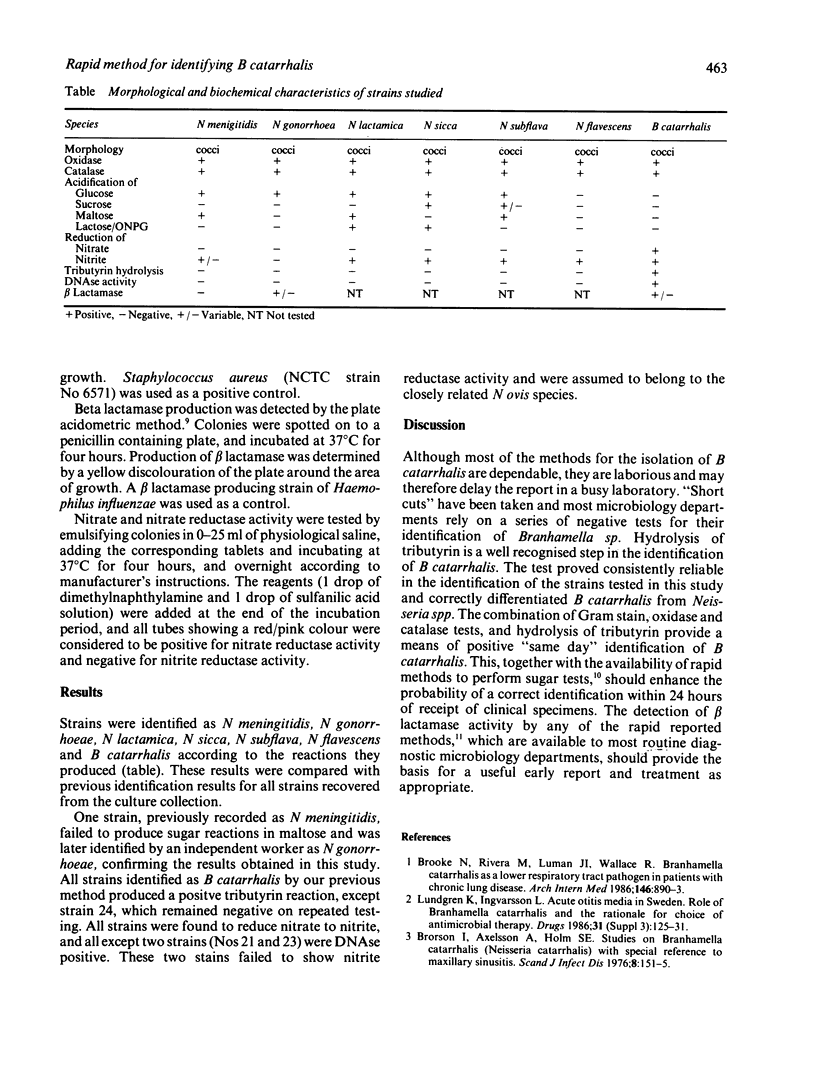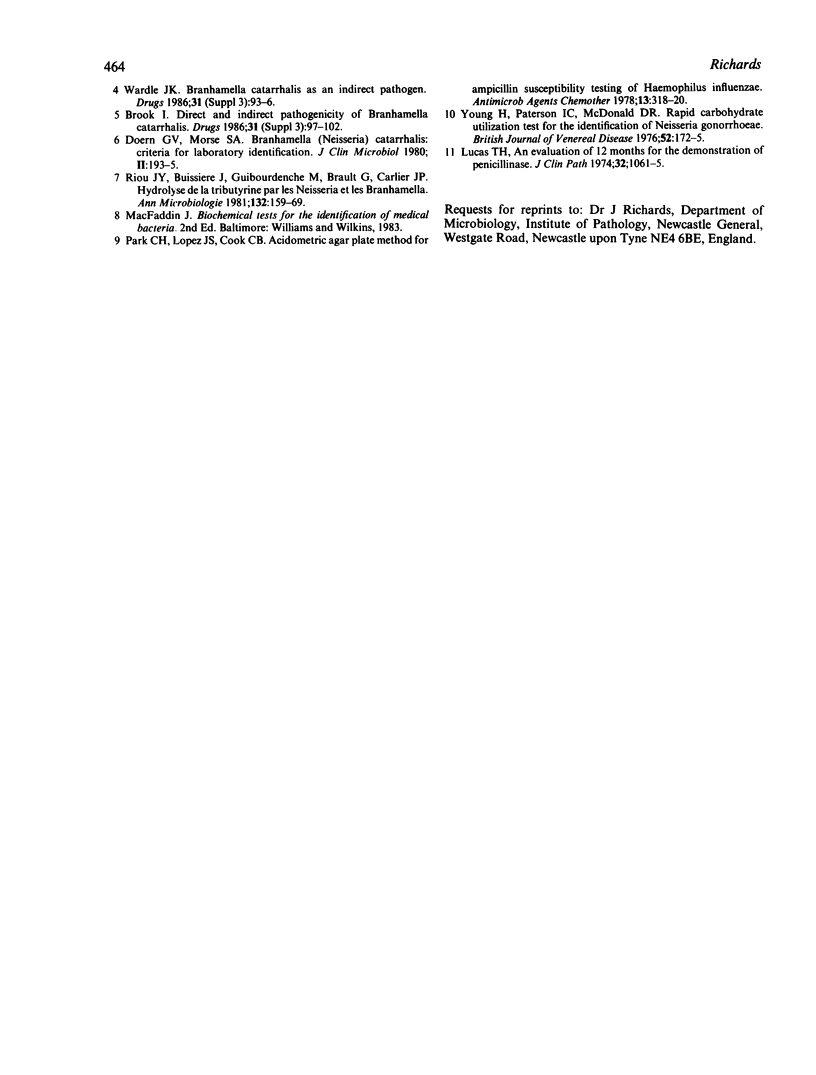Abstract
The speed and precision of hydrolysis of tributyrin to butyric acid as a test to detect Branhamella catarrhalis were evaluated. The test proved consistently reliable in the identification of strains and correctly differentiated B catarrhalis from Neisseria sp. The combination of Gram stain, oxidase, and catalase tests to tributyrin hydrolysis provides a means of positive same day identification of B catarrhalis.
Full text
PDF


Selected References
These references are in PubMed. This may not be the complete list of references from this article.
- Brook I. Direct and indirect pathogenicity of Branhamella catarrhalis. Drugs. 1986;31 (Suppl 3):97–102. doi: 10.2165/00003495-198600313-00021. [DOI] [PubMed] [Google Scholar]
- Brorson J. E., Axelsson A., Holm S. E. Studies on Branhamella Catarrhalis (Neisseria catarrhalis) with special reference to maxillary sinusitis. Scand J Infect Dis. 1976;8(3):151–155. doi: 10.3109/inf.1976.8.issue-3.05. [DOI] [PubMed] [Google Scholar]
- Doern G. V., Morse S. A. Branhamella (Neisseria) catarrhalis: criteria for laboratory identification. J Clin Microbiol. 1980 Feb;11(2):193–195. doi: 10.1128/jcm.11.2.193-195.1980. [DOI] [PMC free article] [PubMed] [Google Scholar]
- Lucas T. J. An evaluation of 12 methods for the demonstration of penicillinase. J Clin Pathol. 1979 Oct;32(10):1061–1065. doi: 10.1136/jcp.32.10.1061. [DOI] [PMC free article] [PubMed] [Google Scholar]
- Lundgren K., Ingvarsson L. Acute otitis media in Sweden. Role of Branhamella catarrhalis and the rationale for choice of antimicrobial therapy. Drugs. 1986;31 (Suppl 3):125–131. doi: 10.2165/00003495-198600313-00028. [DOI] [PubMed] [Google Scholar]
- Nicotra B., Rivera M., Luman J. I., Wallace R. J., Jr Branhamella catarrhalis as a lower respiratory tract pathogen in patients with chronic lung disease. Arch Intern Med. 1986 May;146(5):890–893. [PubMed] [Google Scholar]
- Park C. H., Lopez J. S., Cook C. B. Acidometric agar plate method for ampicillin susceptibility testing of Haemophilus influenzae. Antimicrob Agents Chemother. 1978 Feb;13(2):318–320. doi: 10.1128/aac.13.2.318. [DOI] [PMC free article] [PubMed] [Google Scholar]
- Riou J. Y., Buissière J., Guibourdenche M., Brault G., Carlier J. P. Hydrolyse de la tributyrine par les Neisseria et les Branhamella. Ann Microbiol (Paris) 1981 Mar-Apr;132(2):159–169. [PubMed] [Google Scholar]
- Wardle J. K. Branhamella catarrhalis as an indirect pathogen. Drugs. 1986;31 (Suppl 3):93–96. doi: 10.2165/00003495-198600313-00020. [DOI] [PubMed] [Google Scholar]
- Young H., Paterson I. C., McDonald D. R. Rapid carbohydrate utilization test for the identification of Neisseria gonorrhoeae. Br J Vener Dis. 1976 Jun;52(3):172–175. doi: 10.1136/sti.52.3.172. [DOI] [PMC free article] [PubMed] [Google Scholar]


